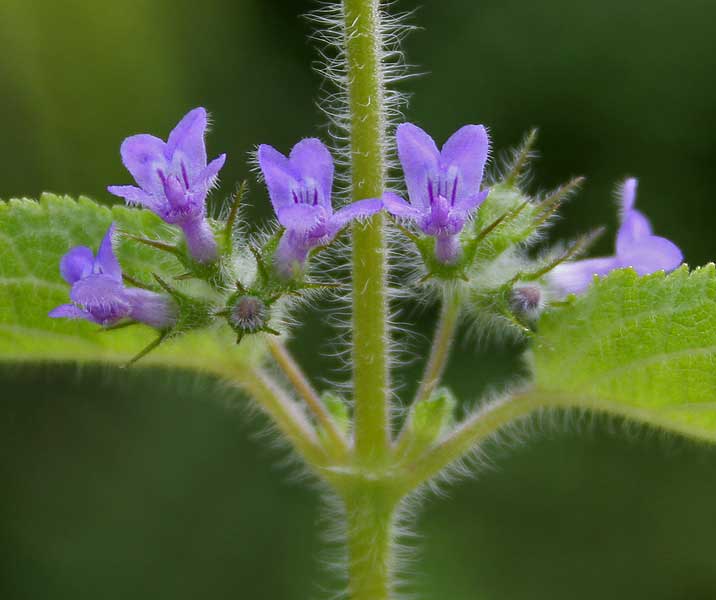
Mesosphaerum suaveolens (*)
Classification System: APG IV
Superregnum: Eukaryota
Regnum: Plantae
Cladus: Angiosperms
Cladus: Eudicots
Cladus: Core eudicots
Cladus: Asterids
Cladus: Lamiids
Ordo: Lamiales
Familia: Lamiaceae
Subfamilia: Nepetoideae
Tribus: Ocimeae
Subtribus: Hyptidinae
Genus: Hyptis
Species: Hyptis suaveolens
Name
Hyptis suaveolens (L.) Poit.
References
Annales du Museum National d'Histoire Naturelle. Paris 7:472, t. 29, fig. 2. 1806
USDA, ARS, Germplasm Resources Information Network. Hyptis suaveolens in the Germplasm Resources Information Network (GRIN), U.S. Department of Agriculture Agricultural Research Service. Accessed: 07-Oct-06.
Mesosphaerum suaveolens, synonym Hyptis suaveolens, the pignut or chan, is a branching pseudocereal plant native to tropical regions of Mexico, Central, the West Indies, and South America, as well as being naturalized in tropical parts of Africa, Asia and Australia.[2] It is generally 1–1.5 m (3.3–4.9 ft) tall, occasionally up to 3 m (9.8 ft). Stems are hairy, and square in cross section. Leaves are oppositely arranged, 2–10 cm (0.79–3.94 in) long, with shallowly toothed margins, and emit a strong minty odor if crushed. Flowers are pink or purple, arranged in clusters of 1–5 in the upper leaf axils.[3]
Uses
Studies have found that M. suaveolens is effective as an insecticide.[4][5]
Mesosphaerum suaveolens can be made into a refreshing drink by soaking the seeds in water and refrigerating the mix. Some people add lemon or other citrus to improve the taste. In Colima, Mexico, people use the M. suaveolens seeds to prepare a traditional beverage called "Bate." The process consists in roasting and grinding the seeds and then mixing the resulting powder with water. M. suaveolens is also a traditional treatment for diarrhea.
See also
Salvia hispanica
References
"Mesosphaerum suaveolens (L.) Kuntze", Plants of the World Online, Royal Botanic Gardens, Kew, retrieved 2019-10-11
Kew World Checklist of Selected Plant Families
"Weeds of Australia Factsheet — Hyptis suaveolens". Archived from the original on 2014-02-22. Retrieved 2014-02-15.
Cyrille Adda, Pierre Atachi, Kerstin Hell, and Manuele Tamò. Potential use of the Bushmint, M. suaveolens, for the Control of Infestation by the Pink Stalk Borer, Sesamia calamistis, on Maize in Southern Benin, West Africa
Conti et al. Hyptis suaveolens and Hyptis spicigera (Lamiaceae) essential oils:qualitative analysis, contact toxicity and repellent activity against Sitophilus granarius.
Retrieved from "http://en.wikipedia.org/"
All text is available under the terms of the GNU Free Documentation License

